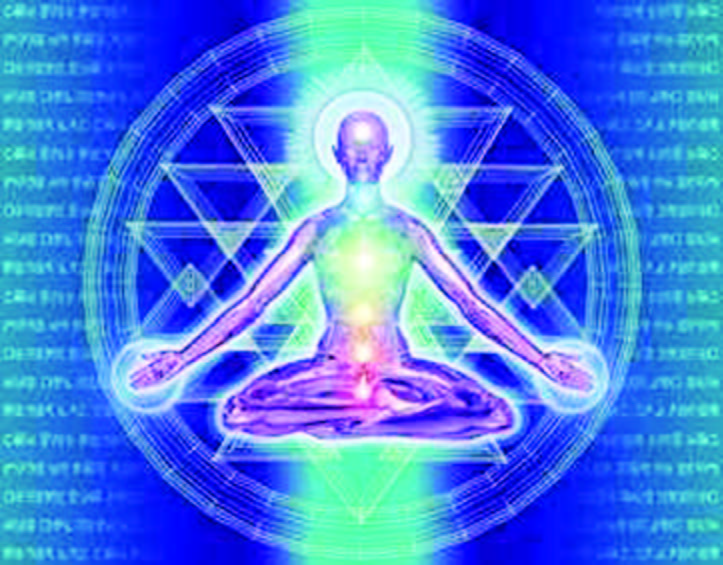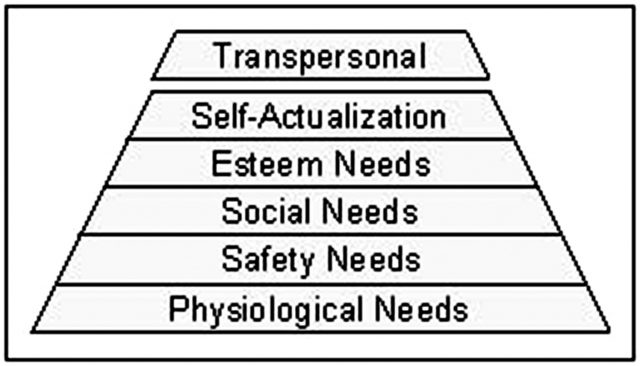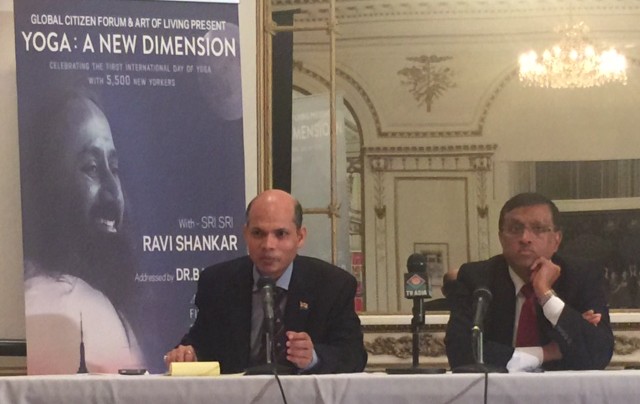
You are healthy, fairly happy, and well-settled in life. Yet, there is a vague vacuum, a nagging feeling that there should be more to life. This amorphous condition ails many, often unbeknown even to them, but is known in psychiatry and psychology, more so in the past few decades when at least one of the streams of psychology started looking beyond mental illness at enhancing life and happiness, if not imbuing life with meaning.

That stream is known as Humanistic Psychology-Transpersonal Psychology, which goes beyond the established Freudian and behaviorist schools. The most well known of the third school has been Abraham Maslow (1908-1970), an American psychologist who introduced a model of developmental psychology that has become well known not only in the field of psychology, but also in management and other human sciences. It describes five developmental stages, which are based on what Maslow calls human needs. Thus, his model is known as Maslow’s hierarchy of needs and depicted as a pyramid.
At the base of this pyramid is Physiological Needs, including food, water, air, and sleep. And then on to Safety Needs Social Needs and Esteem Needs. At the peak is the need for Self-Actualization. In between Esteem and Self-Actualization needs, Maslow also later acknowledged the needs for aesthetics and knowledge.
Point to be noted is that what the most enlightened, modern psychology is asserting lately has been addressed eons ago by the yogic sciences of India. Here we are, of course, talking about authentic yoga, which while possibly including body work or asana-pranayama as a foundation, is actually about encountering, examining, exploring, integrating and transcending the many levels, currents and crosscurrents of mind and consciousness.
Most of us routinely experience three states of consciousness, namely, sleep, waking and dreaming states. In meditation, even a novice has flashes of a fourth state, when you subjectively feel you had blanked out, but coming out it did not feel like sleep. Brain wave pattern using the electro-encephalogram will confirm that you were not sleeping, you were alert yet in a deep state of rest. In yoga they call the state Samadhi. It is better understood as pure consciousness – you are conscious, not of anything outside or inside, but of consciousness itself. It is like the snake eating its own tail. Beyond time and space, samadhi is transcendence of our mundane experience. Perhaps the craving for this transcendence goads so many to experiment with drugs, in particular psychedelics. There is also bliss.
It is, however, important to note that there is a great difference between the terms Self-Actualization as postulated by Maslow and Self-Realization as in spirituality, with the former having to do with higher levels of fulfillment at the personality level, while still in relation to worldliness. Self-Realization has to do with that knowing of pure consciousness (or many other such terms), which is beyond, transcendent, or transpersonal. Maslow, too, in his later years, expanded his model to include the higher levels of human experience.
But the bliss and beatitude that we see and sense in depictions of a Buddha, Mahavir, Nanak, Jesus or Krishna seem many times more. That is because they have attained enlightenment (often shown in pictures as a halo) where they are able to sustain the bliss, the transcendence, the pure consciousness alongside other three states of consciousness. Guru Nanak described it as ‘naam khumari Nanka chadi rahe din raat’.
A still higher state of consciousness is when pure consciousness experienced within is also witnessed as the stuff of which everything in the universe – animate and inanimate- is made of. I am That, Thou art That, All This is That – declare the three Veda mahavakyas, containing the highest knowledge uttered so simply yet profoundly. Science and spirituality are converging again because Quantum Theory too has reached the point where the source of all matter and energy is described as a vacuum, a nothingness that contains all the possibilities of everything that has ever existed or could exist.
Mystics and munis would rather say that it is Immanent God that permeates everything. As Pope Francis wrote this week in his encyclical (a controversial document because it calls upon the human world to combat climate change to save the earth),
“The universe unfolds in God, who fills it completely. Hence, there is a mystical meaning to be found in a leaf, in a mountain trail, in a dewdrop, in a poor person’s face.” The Pope quotes a ninth century mystical Muslim poet Ali-al-Khawas to bridge the gap between the creatures of the world and the interior experience of God: “The initiate will capture what is being said when the wind blows, the trees sway, water flows, flies buzz, doors creak, birds sing, or in the sound of strings or flutes, the sighs of the sick, the groans of the afflicted.”
Most of us, caught as we are in our daily struggles, transient desires, grasping at this and that, have no time and inclination to take the road not taken – not in these times of ever-present distractions of text messages and YouTube videos and many forms of instant gratification. But the untrodden path promises untold riches, and sublime experience beyond the reach of our ordinary mind and intellect. The mystic streams of major world religions offer the wherewithal to guide the seeker on the odyssey and shining examples in the many prophets and men of God who scaled the higher reaches of yoga and lived to tell the world.





Be the first to comment